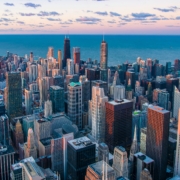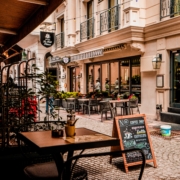UNDERGROUND MARKETING
I am enthralled by the trend of finding abandoned, unloved and seemingly hopeless spaces and turning them into something remarkable. New York City’s High Line is one example. I’ve recently learned about two projects that are meant to move people underground. Thinking about them made me wonder what that means for PR people and marketers. Can we harness the underground trend?
The Low Line is an underground park planned for Manhattan’s Lower East Side – still in development and seeking some funding on Kickstarter. The visionaries say that they “plan to transform an abandoned New York City trolley terminal into a vibrant community green space using new solar technology.” They explain that they’ve invented technology that will channel solar energy underground. The solar energy will be, literally, like sunshine and create photosynthesis. Trees and plants can grow in the trolley terminal. Cool, huh? The developers say that the 1+ acre space can be used for farmers’ markets, concerts, school programs and the like. As envisioned, it’s a green boon to a cement-bound community, albeit a green underground.
This month, award-winning Finnish chef, Timo Linnamaki opened what he calls a “Pop-down” restaurant. It’s a 64-seat establishment in the bowels of a limestone mine near Helsinki. An AP article says the place is booked solid until it closes September 29. Linnamaki was quoted as saying that cooking underground helps him cut out all the distractions and focus on his art. Restaurant guests report that their four-course $160/plate meal was superb.
We marketers know that placing a brand in an unexpected place can help reframe the conversation around it. Pop-up stores, the Charmin bathrooms in Times Square, and the Occupy Wall Street protesters are all proof-points for this. But being underground is already fraught with meaning. A brand that goes underground must use the back story to tell its own.
Being underground implies something secret and hidden, a netherworld or alternate universe. Something that is underground is buried and demands discovery. Being underground also suggests the opposite: hiding from something or someone. Underground, you don’t want to be found. Like the residents of District 13 in The Hunger Games you’re waiting for your moment to return to surface where you can achieve world dominance. The goal in both cases is to come back into the light.
Underground parks and high-end “pop-down” restaurants have a lightness built into their narratives. But an underground movement or project or place could just as easily turn dark. If we plan to go underground, we will have to tread carefully and present our story as something rich to be uncovered. Reframing a conversation with an underground element adds a frisson of mystery and excitement that could be mined (!), but tread cautiously, as the story could easily be misread.
For my brainstorming exercises this week, I’m going to think about how to take brands underground, fully exploring the good and the sinister. I’ll also consider world dominance, of course. What about you?
BTW. The Lowline developers have staged a model in the Essex Street market this week. I plan a visit.











